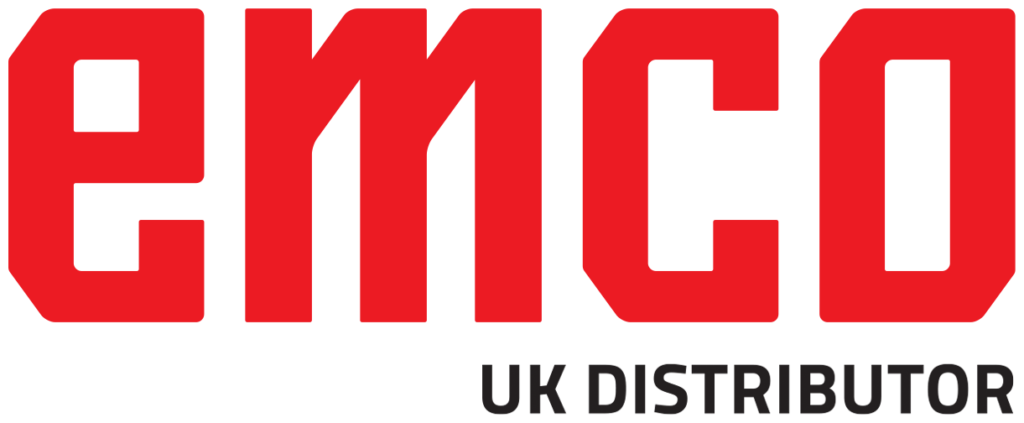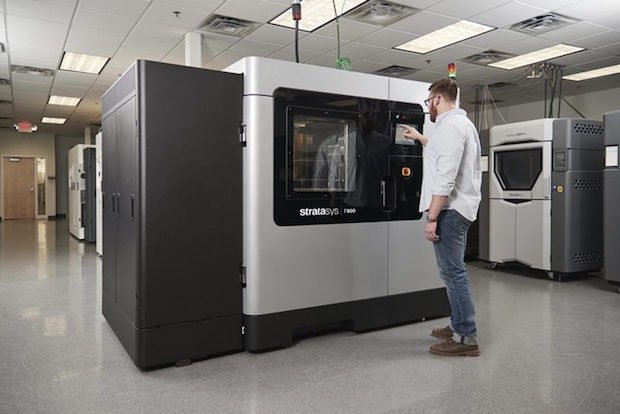Stratasys has announced the launch of new machines for prototyping and production, as well as a software platform for the streamlined creation of jigs and fixtures.
The new products were introduced ahead of the 2018 RAPID + TCT event, as a two-hour keynote session featuring LAIKA and USA Luge, two Stratasys customers, kicked off proceedings in Fort Worth, Texas. Stratasys’ Rich Garrity and Phil Reeves provided insights on the show announcements, while Brian McLean and Jon Owen detailed how LAIKA and USA Luge had harnessed Stratasys additive manufacturing (AM) technology, respectively. Highlights from the keynote can be found here, while details on the show announcements can be found below.
‘Pushing the envelope of what’s possible with 3D printed prototypes’
Stratasys is bringing to market an enhanced Stratasys J750 3D printer and the new J735 machine which have been designed to reduce development cycles, and enable engineers and designers to produce more realistic prototypes.
The new and enhanced machines are supplemented by a new vivid colour package which boasts in excess of 500,000 colour combinations and the also enhanced GrabCAD Print software. The software now supports VRML files, which allows designers to implement more realistic textures, images and graphics on-part. It means prototypes can be developed to accurately represent the colour and the functionality of the part, while removing the need for painting, assembly and even in post processing. Stratasys says it demonstrates the company’s will to continue pushing the envelope of what’s possible with 3D printed prototypes.
The newly advanced J750 and J735 are engineered to power prototype creation in industries ranging from automotive and consumer goods to research and education. Building true representations of final products for successful design verification, functional performance testing and fit/form applications, both PolyJet 3D Printers simulate parts with full colour and textures – ranging from rigid to flexible, transparent to opaque. Additionally, two new materials – VeroYellowV and VeroMagentaV – are said to deliver enhanced red/orange/yellow colours with translucency, and be a ‘perfect match’ for consumer goods and models used to represent automotive lights and housing. These advanced colours are available both on the J750 and J735 3D Printers – and now the Connex3 3D Printer.
“With the new vivid colours solution on the J750 3D Printer, we are able to produce prototypes with incredible realism, such as the transparent multi-colour covers for our tail lights. This can offer the texture and colour-matching requirements to meet our design approval process,” says Reinhard Schiechel & Dr. Tim Spiering, Audi Model shop and 3D printing centre. “This ability to produce transparent multi-colour prototypes that so closely mimic the final part, in a single print, might significantly reduce time and cost required for each design process. Consequently, we could free capacities to run through more iterations and improve overall design, while accelerating our time-to-market.”
While the automotive industry remains a key target market for Stratasys’ prototyping solutions, the J750 has found a home in the entertainment sector too. LAIKA, whose Director of Rapid Prototyping, Brian McLean took part in Monday’s keynote session, has harnessed the technology to ensure naturalistic facial animation for its puppets, as seen in ‘Coraline’ and ‘Kubo and the Two Strings’.
“Being able to have a 3D printer like the Stratasys J750 that’s dimensionally-accurate, repeatable and with an improved range of colour has allowed us to break down creative, and technical barriers,” McLean noted. “For our next film, unannounced, we used Stratasys’ new colour 3D printing technology and another voxel slicing software package. This combination of hardware and software allowed us to achieve a level of detail and subtlety in facial animation that was previously unattainable.”
‘Advancing AM into the mainstream’
While Stratasys continues to develop solutions for the prototyping of parts, it is also continuing to drive the adoption of AM as a manufacturing tool. And with the launch of the F900 series of 3D printers, believes it is advancing AM into the mainstream.
The F900 is built on the Fortus 900mc platform, one of Stratasys’ best selling products. It is available in three different solutions: As a standard product, featuring MTConnect-ready interface and production-ready accuracy and repeatability, the F900; one delivering the performance and traceability required for flight-worthy parts, the F900 Aircraft Interiors Certification Solution (AICS); and a production-grade system, able to produce parts with the ‘highest FDM repeatability and performance’ in ULTEM 9085 resin, the F900 PRO.
“What’s really exciting about this development is that Stratasys is showing how additive manufacturing has finally reached the level of repeatability and performance required for final part production,” says Keith Kmetz of consulting firm, IDC. “With the introduction of the F900 Production 3D Printer and the focus on industry standards and standardization, Stratasys is helping to advance this technology from its prototyping and tooling roots to a true industrial additive manufacturing system.”
Owners of existing Fortus 900mc systems can upgrade to any of the three current F900 systems.
In addition to Nylon 12 CF being offered on the Fortus 900 and 450 systems, Stratasys’ manufacturing services division, Stratasys Direct Manufacturing, is also now offering parts built with FDM Nylon 12CF, ideal for functional prototypes and production parts in high-requirement applications.
Stratasys is also offering this high-performance material on a specialized Fortus 380 and now has a family of 3D printers in a range of price points that can build with Carbon Fiber Nylon 12. Stratasys expects the Fortus 380 CF to ship in Q2 – Q3.
Streamlining the creation of jigs and fixtures
Stratasys’ third RAPID + TCT announcement concerns a new software designed specifically to improve the Stratasys Additive Manufacturing solution for the production of jigs, fixtures and tooling. The company is looking for beta customers prior to its release to market.
This new software component, called Jigs and Fixtures for GrabCAD Print, simplifies and automates print preparation for rapid tooling applications. This addition to the company’s solutions for rapid tooling further enhances the use of Stratasys’ robust industrial hardware and materials for creating jigs & fixtures on the factory floor.
Stratasys FDM Technology is used extensively for rapid tooling applications across a range of industries. Companies from the Team Penske race team to consumer vacuum maker, Oreck, use FDM to accelerate the production of fit-for-purpose jigs and fixtures to reduce cost and repetitive stress injury, while improving cycle time and production flexibility. The new software will help industry streamline operations and improve efficiency for jig and fixture creation.
Offered through GrabCAD Print, the software embeds application expertise, automates several complicated and time-consuming processing steps, and eliminates the need for multiple programs within the workflow.
Jigs and Fixtures for GrabCAD Print expands upon the capabilities offered in Stratasys Insight to streamline the toolpath planning process; increasing ease of use, reducing time and costs to create jig and fixture parts, and maximizing the value for Stratasys’ Additive Manufacturing solutions.
By accepting native CAD designs, the part’s original design intent is maintained. This eliminates the need for users to convert their CAD design to an STL file, which can result in key information being lost during translation.
With Jigs and Fixtures for GrabCAD Print, Stratasys offers tooling designers and manufacturing engineers a streamlined design-to-part workflow and a user-friendly path between tooling CAD design and additive manufacturing.
The solution is designed to offer the following benefits:
- Eliminates extensive design and processing knowledge as a barrier to implementation, opening up jig and fixture CAD design to more users, even first-time designers.
- Saves time and eliminates unnecessary iteration during the design and processing phase.
- Eliminates the need for formal software training because it’s simple and intuitive to learn.
- Eliminates need for third-party software, including STL-file fixing applications, due to its ability to accept native CAD designs.
- Enables tooling designers to easily leverage the design freedom potential in FDM technology.
- Simplifies workflow by automating key CAD functionalities used for jigs and fixtures design, such as auto-generating toolpath instructions, and it significantly reduces tedious file preparation tasks.
The Jigs and Fixtures for GrabCAD Print software is targeted to manufacturing engineers, tooling designers, and production managers, as well as service bureau programmers, executives, and owners.
Stratasys is prepared to offer more information on these new products throughout RAPID + TCT at booth #1104.


